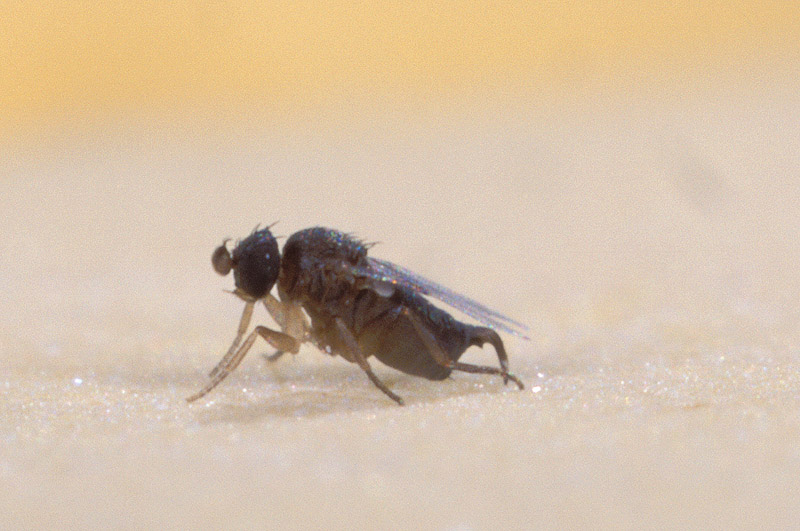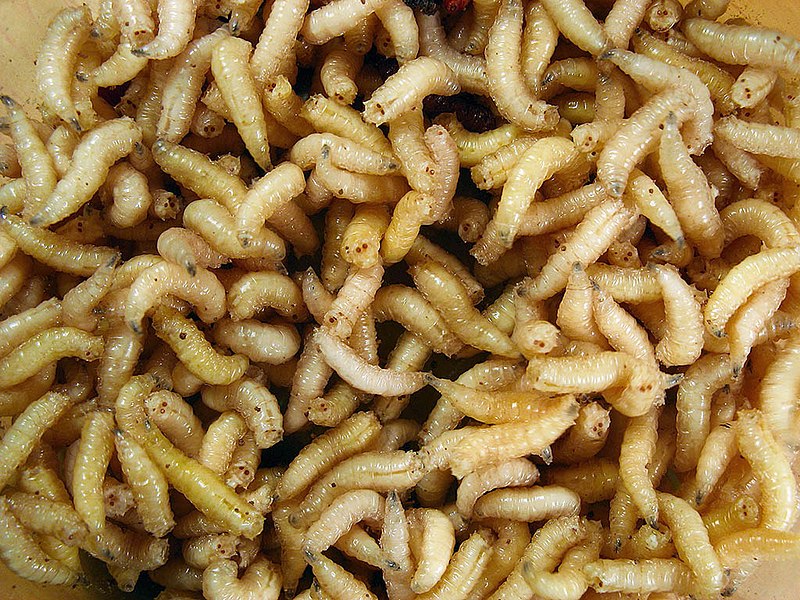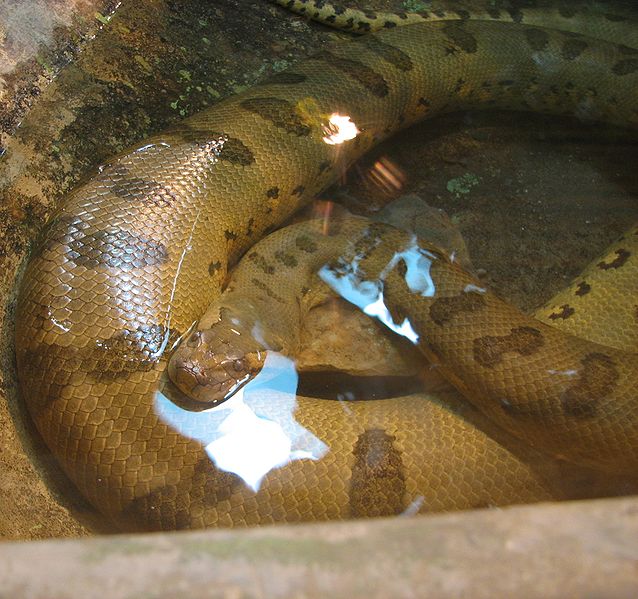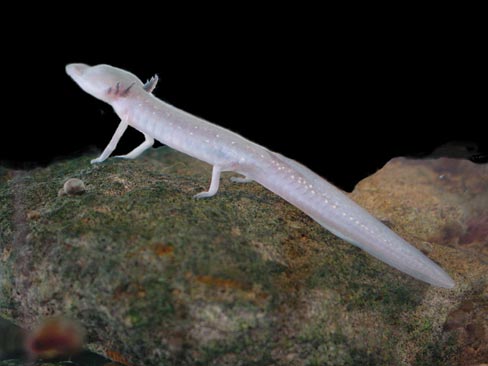 Reptile, Amphibian, Tarantula and Scorpion owners often ask me how to rid their terrariums and homes of the “Fruit Fly” hoards that crop up from time to time. Those keeping carnivorous pets are rightly confused, since fruit is never on the menu, yet the flies persist. Usually, the culprit turns out to be annoying little beast known as the Phorid Fly (a/k/a Scuttle or Humpbacked Fly). The species most commonly seen in the USA is Megacelia scalaris, but some 4,000+ other members of the insect family Phoridae plague pets and people the world over.
Reptile, Amphibian, Tarantula and Scorpion owners often ask me how to rid their terrariums and homes of the “Fruit Fly” hoards that crop up from time to time. Those keeping carnivorous pets are rightly confused, since fruit is never on the menu, yet the flies persist. Usually, the culprit turns out to be annoying little beast known as the Phorid Fly (a/k/a Scuttle or Humpbacked Fly). The species most commonly seen in the USA is Megacelia scalaris, but some 4,000+ other members of the insect family Phoridae plague pets and people the world over.
Description and Life History
Phorid Flies do indeed resemble Fruit Flies, but a close inspection will reveal them to be lighter in color (tending towards grey), more prone to running (“scuttling”) than flying, and without the Fruit Flies’ red eyes.
Like Fruit Flies, if there is food, they will appear, no matter what precautions are taken (it really is amazing how quickly they “materialize” when even the tiniest food source is available). They are very common in cricket-rearing facilities, and frequently hitch a ride to a new home along with this common food item.
Unlike their sweet-toothed cousins, however, Phorid Flies and their larvae (or maggots) are scavengers, feeding upon dead insects, feces, eggs and necrotic flesh associated with wounds.
Potential Problems
 While Phorid Flies have not been known to injure healthy herps or invertebrates, in addition to being a plain nuisance they can colonize wounds, where they may cause complications. Their maggots also commonly appear inside dead or infertile reptile eggs. This puzzled me until it was discovered me (not by me!) that the flies lay their own eggs on the shells of reptile eggs – the hatchling maggots are so tiny that they actually enter the egg via the air pores in the shell! It’s not known whether they attack healthy eggs, but it is not likely.
While Phorid Flies have not been known to injure healthy herps or invertebrates, in addition to being a plain nuisance they can colonize wounds, where they may cause complications. Their maggots also commonly appear inside dead or infertile reptile eggs. This puzzled me until it was discovered me (not by me!) that the flies lay their own eggs on the shells of reptile eggs – the hatchling maggots are so tiny that they actually enter the egg via the air pores in the shell! It’s not known whether they attack healthy eggs, but it is not likely.
Studies at zoos have revealed that Cockroaches, Mice, House Flies and other pests can spread harmful micro-organisms and diseases from cage to cage. Research is needed regarding Phorid Flies, but considering their tiny size it is useful to keep this possibility in mind.
Further Reading
Further information on the control and habits of Phorid Flies and related species here.
Phorid Fly Maggots image referenced from wikipedia and originally posted by Dalius Baranauskas (Dalius 1000)
 Working with Green Anacondas (Eunectes murinus) in the Bronx Zoo and participating in a capture/tagging project in Venezuela was a childhood dream come true. While I cannot recommend a potentially deadly behemoth as a pet, interest in them is always high…today I’ll highlight the natural history of this impressive giant.
Working with Green Anacondas (Eunectes murinus) in the Bronx Zoo and participating in a capture/tagging project in Venezuela was a childhood dream come true. While I cannot recommend a potentially deadly behemoth as a pet, interest in them is always high…today I’ll highlight the natural history of this impressive giant. That Reptile Blog – Reptile, Amphibian and Exotic Pet Care and Information
That Reptile Blog – Reptile, Amphibian and Exotic Pet Care and Information





